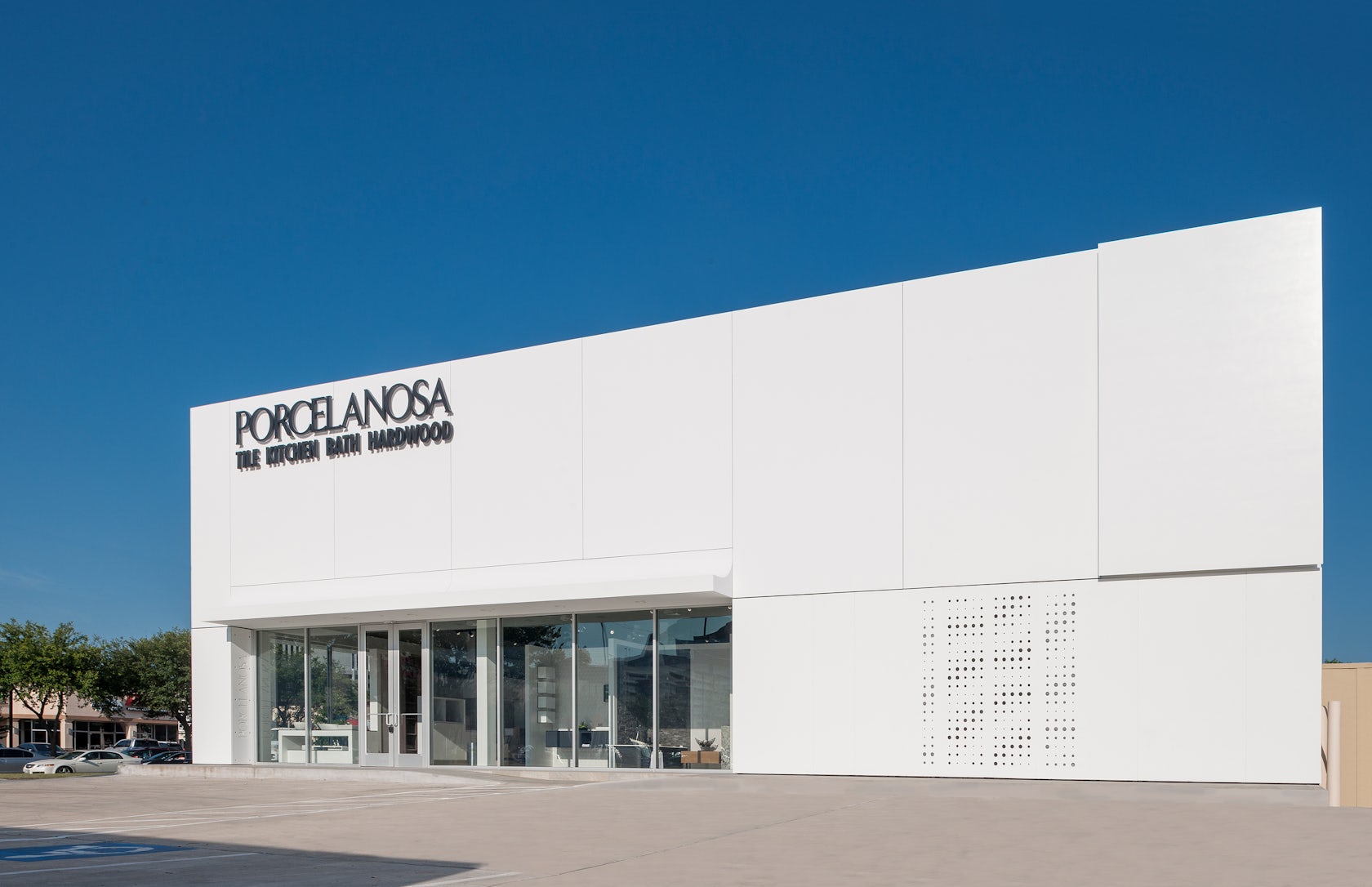Since Pepe Soriano founded PORCELANOSA on the Mediterranean seaside in 1973, this maker of tile, kitchen and bath products has transformed from a small-village venture into a global standard bearer in all things ceramic. For evidence of this still-family-run company’s powerful rank, just look to its physical presence: PORCELANOSA distribution network comprises more than 400 official showrooms, associates and dealers worldwide. Of the 120 or so showrooms within that larger number, many have opened recently — in places as far afield as Atlanta’s Buckhead district, Madrid and the Bangladeshi city of Dhaka.
This showroom spree has focused on quality and quantity alike. The recent initiative includes headliner buildings like a Norman Foster–designed Manhattan flagship, which opened in 2015 to much acclaim. The message? PORCELANOSA advocates great design at all scales. Treating the showroom as something more than a transaction site, the Spanish company also is using these spaces to prove its products’ mettle: The new 3,000-square-foot PORCELANOSA showroom in Houston, designed by the company’s architectural projects manager and in-house architect Ignacio Vidal Traver, is the first building in the United States that includes a rainscreen façade created out of KRION® Solid Surface.

KRION® is an antibacterial nonporous material developed by Porcelanosa member company Systempool. Comprising alumina and high-quality acrylic resin in a two-to-one ratio, the solid surface feels like stone — yet can be cut like wood. Sheets of KRION® can be connected and thermoformed into curved sections; during production, it also can be injected or cut into intricate surface patterns.
The material’s performance attributes make it well-suited to exterior applications. It is easy to repair, unaltered by diverse humidity levels or sudden temperature changes and resistant to all manner of frost, fire or chemicals. KRION® even poses a formidable barrier to staining and graffiti. The material’s manufacturing processes further render it ideal for large-scale exterior use, as its seamless fabrication and adaptability to different geometries lend to architectural expression.

Among possible exterior uses, PORCELANOSA has identified ventilated façades as a superior application for KRION®. In this cladding system, an air cushion or cavity separates outward-facing KRION® from an external wall. One surface is attached to the other by mechanical fastening or bonding, and KRION façade systems specifically employ advanced anchoring developed by BUTECH (PORCELANOSA Group) to create that layering. Not unlike a rainscreen, KRION® forms a first line of defense from precipitation.
Open joint patterns or openings at the top and bottom of the cladding create ventilation via a thermal chimney effect. The passage of air between the external wall and outer KRION® plane vents any additional moisture from the façade. It also takes some of the stress of heat and cold off the building and its HVAC systems. Thermal insulation sandwiched between the outer surface and the external wall boosts passive environmental performance.

For PORCELANOSA’s Houston showroom, Ignacio, who worked for Albert Viaplana Architects in Barcelona and London-based AHMM Architects prior to opening his eponymous studio in 2009, made the ventilated façade system legible. Ignacio glazed the rectilinear volume’s corner entry and then diagonally balanced the aperture by projecting one panel of KRION® beyond the others. That dimensionality is amplified at night when a streak of backlighting emerges from the space that separates the panel from its datum.
Ignacio also designed the Houston commission to show off the versatility of KRION®. Truncated KRION® awnings that feature tight C curves, cap the corner glazing — proof positive that the material can handle plastic-like manipulation. Meanwhile, some panels include a gradation of dots made by cutting and routing. By day, these dots reveal the dimensionality of the panels, while at night they come to life when backlighting plays off the holes’ varying depths. The wavelike pattern that emerges after dusk provides an undulating counterpoint to the building’s harder-edged form.

In addition to its unique exterior, the Houston showroom includes full-scale vignettes, European-style kitchen displays and specialized sections that spotlight PORCELANOSA’s most popular vanities, fixtures, bathroom products, accessories and floor and wall tiles. The Houston showroom also has a dedicated professional area with a product library that boasts more than 1,000 references. Arrive an architecture buff, leave a satisfied specifier, in other words. What Ignacio has done with his design ensures those two personas remain in dialogue.









